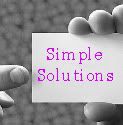Learning Objectives:
Define and explain single entry system.
What are the limitations of single entry system.
How profit is calculated under single entry system of accounting.
Definition and Explanation of Single Entry System:
Learning Objectives:
Define and explain single entry system of bookkeeping.
What are limitations of single entry system of accounting
It is difficult to define single entry system because, in fact, there exists no system like single entry system. Broadly speaking, it is a defective double entry system. Any system that falls short of complete double entry method is called single entry system. Under this method, sometimes both the aspects of transactions are recorded, sometimes only one aspect is recorded or sometime no aspects of transactions is recorded in the books. As a general rule under the single entry practice only the personal aspects of the transactions are recorded and the nominal and real aspects are omitted altogether. As the name implies, the single entry system does not take into account the double affect of every transaction. The ledger contains only the personal accounts of debtors and creditors, all impersonal accounts such as purchases, sales, wages, carriage, rent etc., are not recorded. Thus the system does not consider the two fold aspect of every transaction. In short single entry system may be called a mix of double entry, single entry and no entry.
Single entry system may be defined as a system which does not strictly conform to the double entry system of bookkeeping. Under this system what is found in practice is an intermixture of single entry, double entry and no entry.
Defects/Limitations/Disadvantages of Single Entry System:
The limitations or defects or disadvantages of single entry system may be summed up as follows:
- Under this system only partial and incomplete record is maintained because two fold aspects of transactions are generally ignored.
- As the two fold aspects of every transaction are not recorded, a trial balance cannot be drawn up to test the arithmetical accuracy of the records.
- A nominal accounts are not maintained, a profit and loss account cannot be prepared for want of information regarding the various income and expenditures.
- As no real accounts are maintained the preparation of balance sheet is not possible.
Defects/Limitations/Disadvantages of Single Entry System of Accounting:
Learning Objectives:
What are the limitations or disadvantages of single entry system of bookkeeping.
The limitations or defects or disadvantages of single entry system may be summed up as follows:
- Under this system only partial and incomplete record is maintained because two fold aspects of transactions are generally ignored.
- As the two fold aspects of every transaction are not recorded, a trial balance cannot be drawn up to test the arithmetical accuracy of the records.
- A nominal accounts are not maintained, a profit and loss account cannot be prepared for want of information regarding the various income and expenditures.
- As no real accounts are maintained the preparation of balance sheet is not possible.
Statement of Affairs:
Learning Objectives:
Define and explain statement of affairs.
What is the purpose of preparing a statement of affairs?
Prepare the format of statement of affairs.
Definition and Explanation:
Correct final accounts of a business can be prepared in the records are maintained under the double entry system . How every where the record is incomplete, and it is not all possible to complete it by double entry, in such cases the final accounts can be only approximately prepared by means of a statement of affairs. In appearance the statement of affairs is similar to a balance sheet. For this purpose, two comparative statement of affairs are prepared - one at the commencement of the year and other at the end of the year. The excess of the assets over the liabilities as shown by the statement will represent the capital of the firm. If capital at the end shows an increase as compared to the amount of capital at the start the difference will represent profit and if the capital at the end is less than the capital at the beginning the difference will be loss. In this calculation, however, two more factors should be taken into account.
- Where fresh capital has been introduced into the business during the account period, the closing capital may be taken to have been increased to that extent. To arrive at the true profit or loss, therefore, the amount of fresh capital introduced is deducted from the closing assets as determined under such circumstances.
- Where drawings have been made by the proprietor during the accounting period, such drawings reduce the amount of capital at the close. In order to calculate net profit, it is necessary, therefore, that amount withdrawal should be added to the capital at the close before deducting from it the capital at the beginning.
Formula:
Formula for determining the net profit is put as follows:
(Capital at the end + Drawings - Additional capital introduced) - Capital in the beginning |
Example:
Rashid and Co. keeps his book on single entry system. his position on 1st January, 19991 was as follows:
Cash in hand $200, cash at bank $3000; stock in trade $20,000; sundry debtors $8,500; furniture $1,800; machinery $15,000; sundry creditors $22,000.
On 31st December, 1991 the financial position was as follows:
Cash in hand $300; cash at bank $2,000; machinery $27,000; furniture $1,500; sundry debtors $14,000 stock in trade $19,000 sundry creditors $29,000.
During the year Rashid introduced a new capital of $5,000 and withdrew for his personal expenditure $9,000.
From the above figures, prepare a statement showing the profit or loss made by him during 1991.
Solution:
Rashid & Co.
Statement of Affairs as at 1st January, 1991.
| Liabilities | $ | Assets | $ |
| Sundry creditors Capital (balancing figure*) | 22,000 26,500 | Cash in hand Cash at bank Sundry debtors Stock in trade Furniture Machinery | 200 3,000 8,500 20,000 1,800 15,000 |
48,500 | 48,500 |
Rashid & Co.
Statement of Affairs as at 1st January, 1991.
| Liabilities | $ | Assets | $ |
| Sundry creditors Capital (balancing figure*) | 29,000 34,800 | Cash in hand Cash at bank Sundry debtors Stock in trade Furniture Machinery | 300 2,000 14,000 19,000 1,500 27,000 |
63,800 | 63,800 |
Statement of Profit for the year ending 31st December, 1991.
| Capital 31st December, 1991 | 34,800 |
| Add drawings during the year | 9,000 |
| 43,800 | |
| Less capital introduced during the year | 5,000 |
| 38,800 | |
| Less capital as at 1st January, 1991 | 26,500 |
| Net profit during the year | 12,300 |
Difference Between Statement of Affairs and Balance Sheet:
Learning Objectives:
What is the difference between statement of affairs and balance sheet?
As real or property accounts are not maintained and also because a capital account does not exist under the single entry system, a balance sheet cannot be prepares in the same way as is done under the double entry system. However, in order to have an idea about the financial position on a particular date information concerning the available assets and liabilities is gathered and a statement is prepared setting in it assets and liabilities on the date; this statement is called a statement of affairs. The assets and liabilities are set out in the form of a balance sheet. The excess of assets over liabilities is shown as capital.
Balance sheet and statement of affairs may be distinguished as follows:
| Statement of Affairs | Balance Sheet | ||
| (1) | It is a statement of assets and liabilities (including capital) prepared under the single entry system | (1) | It is statement of assets and liabilities (including capital) prepared under the double entry system. |
| (2) | It is prepared partly from a trader's books, partly from other sources of information and sometimes from memory | (2) | It is prepared with data available from the books of accounts only. |
| (3) | It is compiled from an incomplete books and information, the accuracy of which cannot be relied upon | (3) | It is prepared from a set of books kept according to the double entry system, the arithmetical accuracy of which can be proved. |
Conversion into Double Entry System:
Learning Objectives:
Define and explain conversion method.
How trading and profit and loss account and balance sheet is prepared under conversion method.
Conversion of books from single entry system to double entry system is possible either with retrospective (i.e., on and from a date before the date of conversion arrangements) or with a prospective effect (i.e., on and from the date on which arrangements are made for conversion).
Conversion with Prospective Effect:
If the conversion is to be made with prospective effect a statement of assets and liabilities of a trader on a given date must be prepared. Care should be taken to see that the opening cash and bank balances and also the amount of debtors and creditors appearing in the statement, tally respectively with the opening balances of the cash book and the totals of debit and credit balances, extracted from the personal accounts of the ledger. An opening journal entry is to be made taking the items of assets and liabilities of the statement of affairs thus prepared and after opening the necessary ledger accounts the above journal entry is to be posted. All subsequent transactions are to be passed through different books of original entry such as cash book, purchase book, sales book, etc., and posted into ledger according to the principles of double entry.
Conversion With Retrospective Effect:
For example a trader whose accounting period begins on 1-1-1991 and the books have been maintained under single entry till 30-04-1991. It is decided to convert the books into double entry system with effect from 1-1-1991. This is a case of retrospective conversion. The recourse of the interim period i.e., from 1-1-1991 to 30-04-1991 are to be adjusted before the double entry system is adopted.
Assuming that a statement of affairs at the commencement of accounting period (31-12-1990) is available and single entry records consists of cash book and personal ledger, the process of conversion proceeds as follows:
- Find out the total credit purchases and total credit sales. These can be obtained from the bought and sales ledger respectively.
- A journal entry should be passed to incorporate the balances appearing in the statement of affairs. Items should be posted in the respective accounts in the ledger.
- The cash book should be scrutinized and post the items of receipts and payments appearing in it in the appropriate accounts in the ledger.
- Cash sales and cash purchases can also be found out from the cash book. The figures should be posted to the sales and purchases account respectively.
- Post the credit sales and purchases in the ledger.
- Personal ledger should be scrutinized. Pick up the items for which no corresponding double entry has been effected. These items mostly consist of discount allowed to customers, or discount received, returns inwards, allowances, transfers, bad debts, etc. These items should be posted in the ledger. It is now possible to prepare a trial balance followed by a trading and profit and loss account and balance sheet.
There is a way to obtain final results by short cut method. When a summary of cash and other transactions are given; information regarding assets and liabilities in the beginning and at the end of the year is available, the final accounts can be drawn. In such a case, the missing items which may be any of the following are to be found out from the given data:-
- Capital
- Credit purchase
- credit sales
- Bills receivable
- Bills payable
- Sundry debtors
- Cash in hand and at bank
- Stock in the beginning
Any of these items when unknown may be found out preparing a total debtors account and a total creditors account.
Total Debtors Account
| To (1) Opening balance To (2) Credit sales To (3) B/R dishonoured - if any | By (4) Cash received from debtors By (5) B/R Received By (6) Returns inwards By (7) Discount allowed By (8) Bad debts By (9) Closing Balance | ||
Total Debtors Account
| By (4) Cash paid to creditors By (5) B/p granted By (6) Returns outwards By (7) Discount received By (8) Closing Balance | To (1) Opening balance To (2) Credit purchases To (3) B/p dishonoured - if any | ||
Capital:
If capital is unknown prepare the statement of affairs. The difference of assets and liabilities will represent the capital.
Credit Purchases:
If credit purchases are unknown it can be ascertained from the total creditors account. Add item No. 4, 5, 6, 7, 8 and subtract from the result item No. 1 and 3. It can also be calculated in the following way:
| Acceptance given to creditors | xxxxx |
| Cash paid to creditors | xxxxx |
| Discount allowed by customers | xxxxx |
| Returns outwards | xxxxx |
| Creditors at the close of the year | xxxxx |
| Less creditors at the beginning | xxxxx |
| Credit purchases for the year | xxxxx |
Credit Sales:
If credit sales are unknown, it can be ascertain from the total debtors account. Add No. 4, 5, 6, 7, 8, 9 and subtract from the result item No. 1 and 3. It can be calculated in the following form:
| Acceptance received from debtors | xxxxx |
| Cash received from debtors | xxxxx |
| Discount allowed to debtors | xxxxx |
| Returns inwards | xxxxx |
| Debtors at the close of the year | xxxxx |
| Less debtors at the beginning | xxxxx |
| Credit sales for the year | xxxxx |
Bills Receivable:
I bill receivable are unknown the same may be ascertained from the total debtors account. The formula is:
Item Nos. [(1) + (2) + (3)] - [(4) + (6) + (7) + (8) + (9)]
It may also be ascertained in the following form:
| Bills receivable in hand on 1-1-19 | xxxxx |
| Acceptance received during the year | xxxxx |
| Less bills dishonoured | xxxxx |
| Less bills honored | xxxxx |
| Bills receivable on 31st December | xxxxx |
Bills Payable:
If bills payable are unknown the same may be ascertained from total creditors account:
Item Nos. [(1) + (2) + (3)] - [(4) + (6) + (7) + (8)]
It may also be calculated in the following form
| Bills payable in hand on 1-1-19 | xxxxx |
| Acceptance given during the year | xxxxx |
| Less acceptance honored | xxxxx |
| Bills bills payable on 31st December | xxxxx |
Sundry Debtors:
If opening balance of sundry debtors are unknown we can calculate it by the following method:
Item Nos. [(4) + (5) + (6) + (7) + (8) + (9)] - [(3) + (2)]
If closing balance of debtors is unknown:
Item Nos. [(1) + (2) + (3)] - [(4) + (5) + (6) + (7) + (8)]
Sundry Creditors:
If opening balance of sundry Creditors are unknown we can calculate it by the following method:
Item Nos. [(4) + (5) + (6) + (7) + (8)] - [(2) + (3)]
If closing balance of Creditors is unknown:
Item Nos. [(1) + (2) + (3)] - [(4)+ (5) + (6) + (7)]
Cash in Hand and at Bank:
Prepare the cash book and balance it.
Opening Stock:
Sometime opening stock is unknown, if it is unknown it can be calculated from sales. In such a case from sales fin out the cost price of the goods sold. Add in the cost of goods sold the closing stock. Subtract from the result purchases during the year.
Example:
A trader started business on 1st January, 1991 with a capital of $50,000. He kept only a cash book and a personal ledger. An analysis of the cash book for the year 1991 gave the following figures:
Receipt from debtors $1,40,000; cash sales $42,000; payment to creditors $1,00,000; expenses paid $22,000; personal drawings $10,000; cash purchases $36,000.
On 31st December, 1991 the stock in hand was valued at $20,000 and the debtors and creditors were $1,20,000 and $ 1,10,000 respectively.
You are required to prepare a profit and loss account for the year ended 31st December, 1991 and a balance sheet as on that date, after making a reserve of $2,000 fro bad and doubtful debts.
Solution:
| Cash paid to creditors | 1,00,000 |
| Add creditors on 31-12-1991 | 1,10,000 |
| Credit purchases | 2,10,000 |
Total purchases = 2,10,000 + 36,000 = 2,46,000
| Cash received from debtors | 1,40,000 |
| Add debtors on 31-12-1991 | 1,20,000 |
| Credit purchases | 2,60,000 |
Total purchases = 2,60,000 + 42,000 = 3,02,000
| To Purchases To Gross profit c/d | 2,46,000 76,000 | By sales By stock 31-12-91 | 3,02,000 20,000 |
3,22,000 | 3,22,000 | ||
| To Expenses To Reserve for bad debts To Net profit | 22,000 2,000 52,000 | By Gross profit b/d | 76,000 |
76,000 | |||
76,000 |
| Liabilities | $ | Assets | $ | ||
| Sundry creditorsCapital: Less drawings | 50,000 52,000 ------- 1,02,000 10,000 ------- | 1,10,000 92,000 -------- 2,02,000 ====== | Cash in hand Sundry debtors Less reserve Stock | 1,20,000 2,000 ------ | 64,000 1,18,000 20,000 -------- 2,02,000 ====== |
You Might Also Like :




































0 comments:
Post a Comment